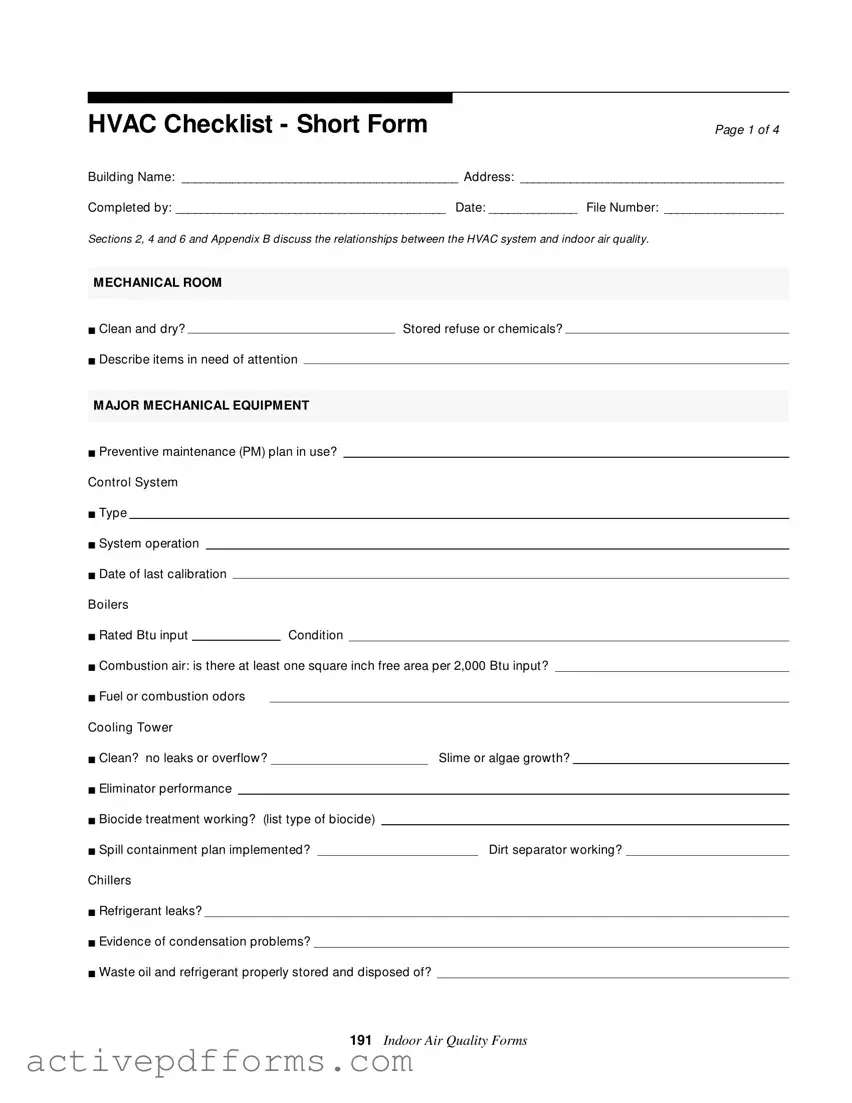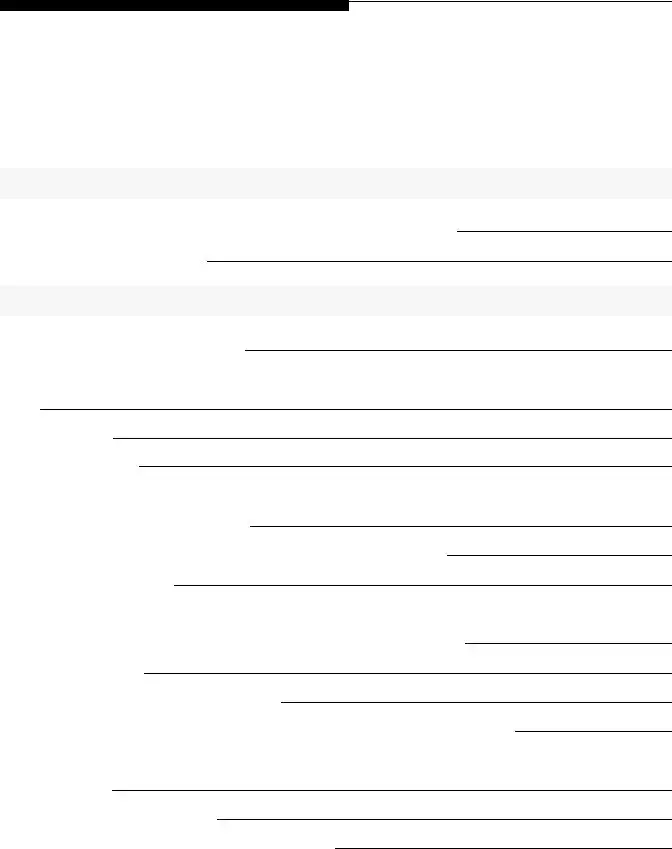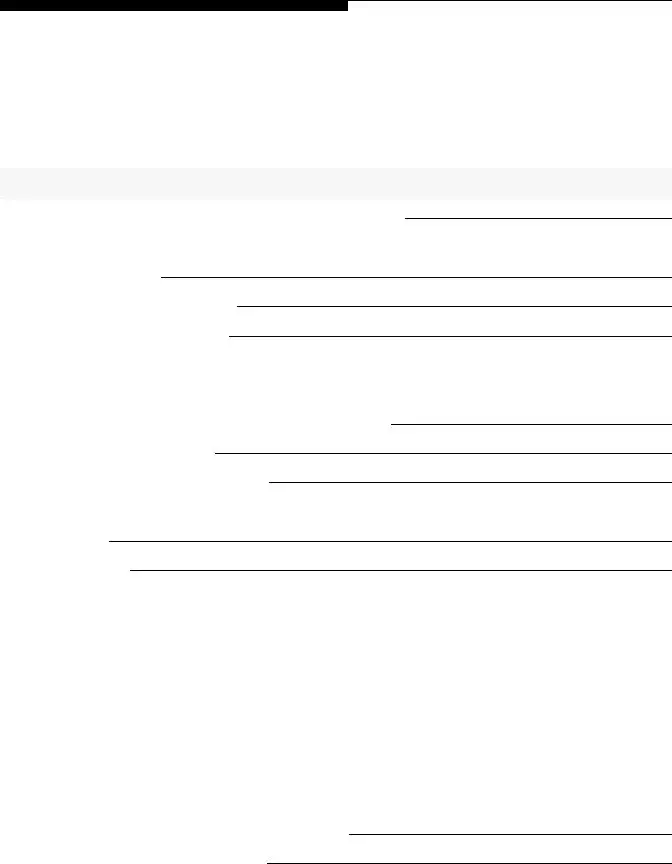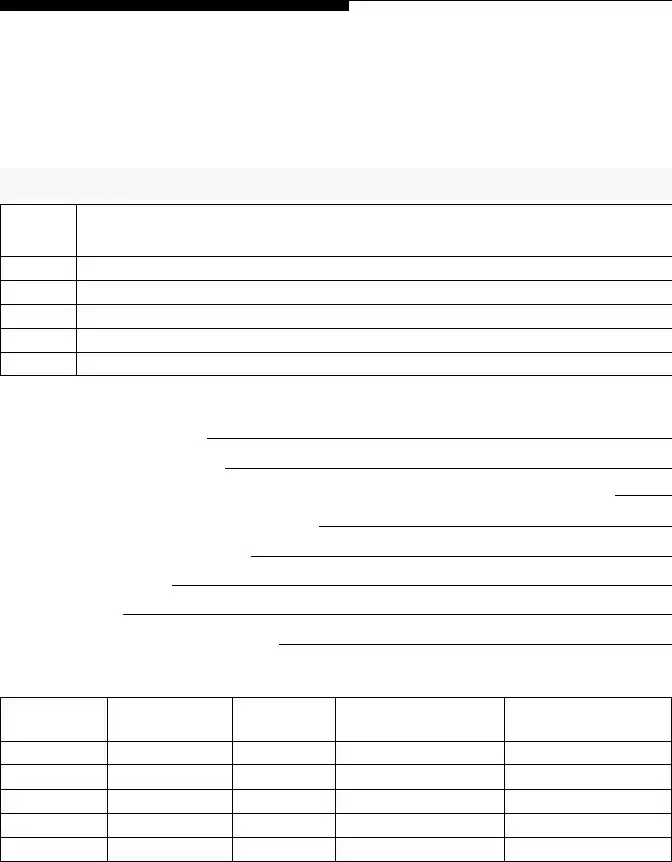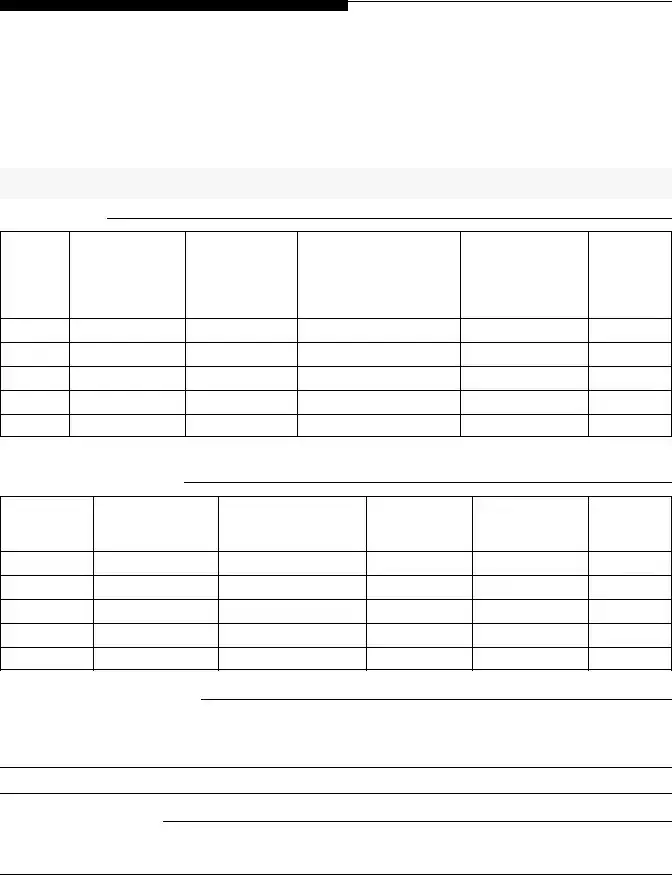Free Hvac Inspection Checklist PDF Template
The HVAC Inspection Checklist Form serves as a comprehensive tool designed to evaluate the condition and efficiency of Heating, Ventilation, and Air Conditioning (HVAC) systems within a building. It outlines specific areas for assessment, ranging from mechanical rooms and major mechanical equipment to air handling units, distribution systems, and the conditions affecting indoor air quality. By meticulously documenting each component's status, building managers can identify necessary maintenance tasks and ensure the HVAC system promotes a healthy indoor environment.
Edit Hvac Inspection Checklist Now
